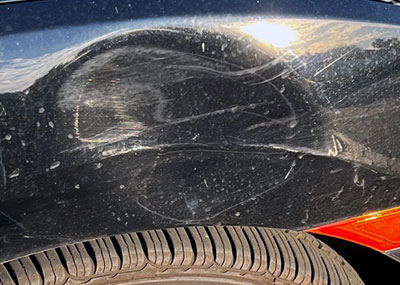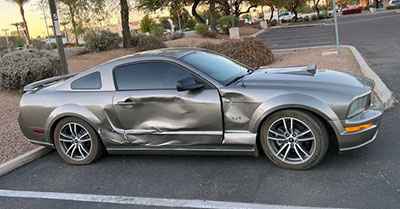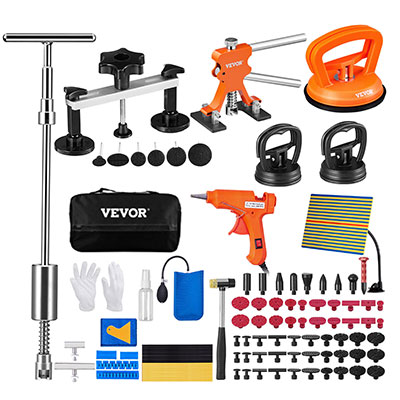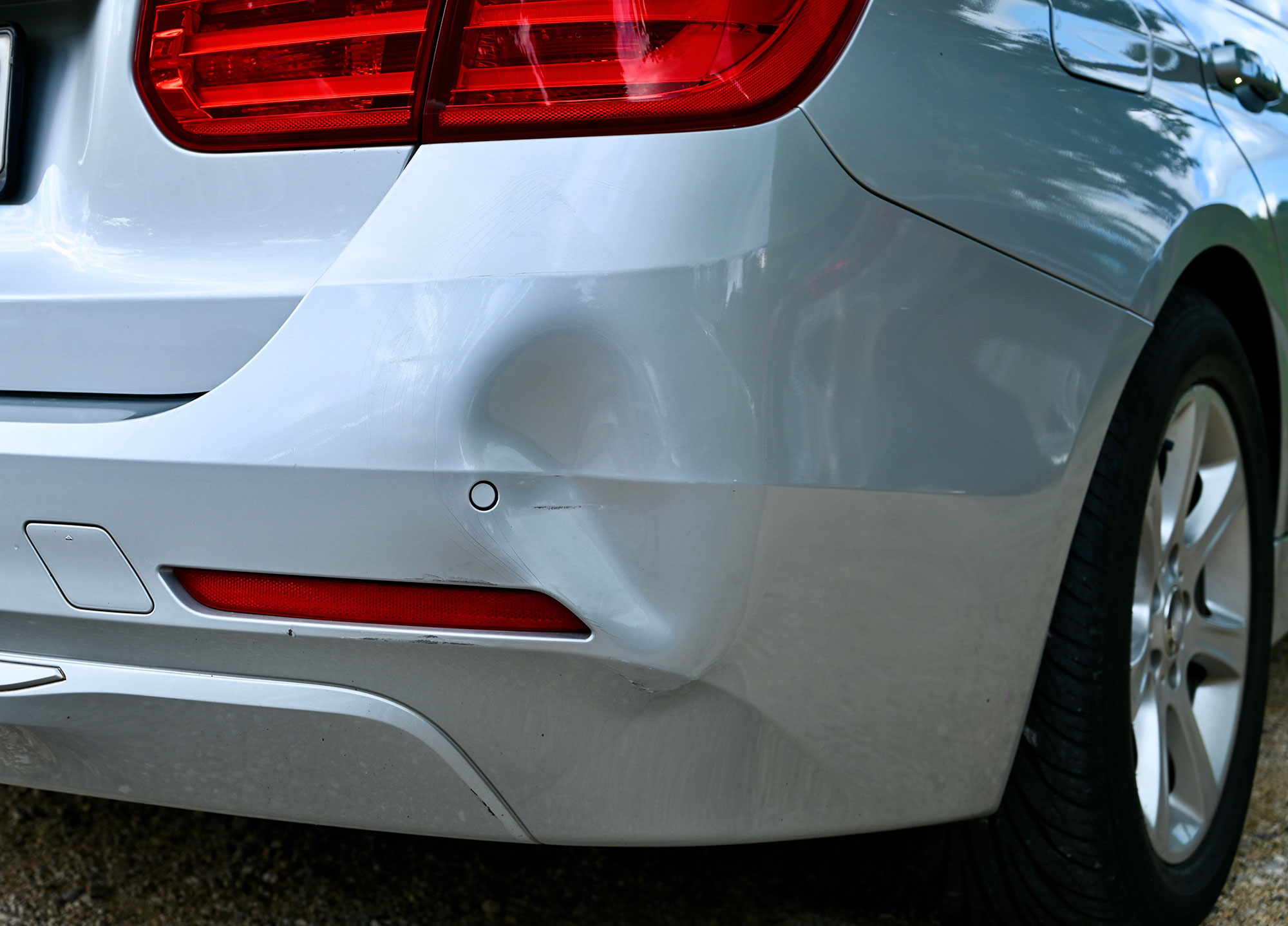Contents
The process of fixing a dent is easy, but it takes experience to know how to get great results. Let’s explore affordable options you can try in your garage.
The Difference Between Dings and Dents

A car dent is bigger than a ding and requires more work to repair.
A ding is a slight dimple without any paint missing. It’s commonly caused by another car door slamming against yours. A dent is more sizable and caused by a more forceful impact with road debris. Carmakers sometimes use body molding to absorb these impacts, but the moldings only work if the offending object hits at the height of the molding.
The damage might be present in the plastic bumper or metal body panel. Either way, you can fix the dent. Significant force and pressure originally created the shape of body parts. When a dent occurs, the plastic or metal wants to return to its former shape. It just needs a little help.

DIY techniques are not appropriate for cars with extensive damage.
You have to be realistic, though. If you have a dent with one impact plane or crease, your chance of a successful repair is higher. Damage is more challenging to repair if the dent has several creases or impact planes.
- If the paint is whole and intact, the dent is probably minor.
- Cracked and missing paint means you must do some paint touch-up after repairing the dent.
Plastic Damage
Many car bumpers and lower trim pieces are made of plastic. This reduces weight and offers some resilience. If your car has a dent in the plastic, see if you can access the panel from the back. You might need to remove foam pieces to get more direct access.
If you have access to the back of the plastic piece, there are three ways to warm up the plastic enough to press it back into shape:
- Park the car in direct sunlight, with the sun shining on the dent or ding. Press against the dent firmly and slowly back into shape when it’s warm.
- Use a heat gun (or hair dryer) to warm up the body panel. Keep the heat gun at least 12 inches away so you don’t damage the paint or plastic. After the plastic is warm, try again to push it back into shape.
- Pour a pot of boiling water over the affected area, and again, try pushing the plastic piece back into its original form.
If the plastic piece is cracked or has several large indentations, these methods might not work. In this case, replacing the plastic part is often less expensive than having it repaired at a shop.
Metal Damage

You might need reposition the cup in several locations to get the entire dent to pop back into shape.
Most body panels are made from sheet metal, which is relatively thin. Here are four methods for fixing a dent that bring the sheet metal back into shape.
- If the damage is on the hood or trunk, you can access it from the underside. Locate the center of the impact and press up. You may see (or hear) the metal return to its original shape.
- Park the car in sunlight to warm the metal, then pour boiling water over the impacted area. Immediately place a small piece of dry ice against the dent or ding. The sudden temperature change is often enough to return the metal to its original shape. Take precautions when using dry ice, such as wearing gloves and eye protection. If necessary, reapply to get results.
- Apply a suction cup made explicitly for bodywork to the impacted area. Many variations and sizes are available. After applying suction to the body panel, slowly pull the cup’s handle away from the body panel. You should reposition the cup in several locations to get all the portions of the dent to pop back into the original shape.

A dent repair kit often includes a bridge/rail tool.
There’s one final method for fixing a dent that involves a bridge/rail and a stud glued to the car. Vendors offer a dent repair kit with glue sticks and a metal stud or bolt-like fixture. Use the glue to affix the stud to the damaged area and let it harden. Then, apply a bridge or rail across the damaged area, centering it over the bolt.
- After it’s in place, the bridge uses a screw mechanism to slowly pull up on the bolt, along with the dent.
- Continue tightening the bolt until it is level with the car’s original shape.
- After you’re satisfied with the repair, remove the bridge and use a plastic blade/scraper to remove the glue and bolt. If necessary, you can reapply the bolt and place the bridge on a different pair of points.
- Instead of a rail, some vendors offer a handheld device with a fixed width. This is often used for minor dings, such as from hail damage.
Minor dings and dents are often easily repaired using one of these methods. If none of these processes fixed the dent or you are dissatisfied with the final look, it may be time for a visit to a professional body shop.
Shop now for dent fix tools





